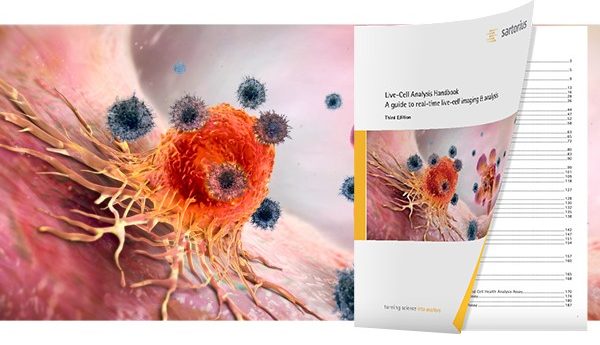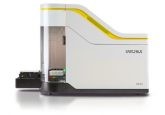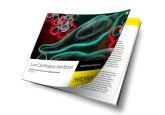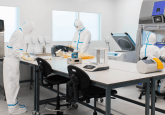Live-cell analysis handbook, third edition, is now online!

Sartorius (Göttingen, Germany) is excited to announce the release of the downloadable version of the third edition of their Live-Cell Analysis Handbook, a popular publication for a broad range of scientists who perform cell biology assays as part of their research. Since its launch, they have fulfilled more than 3,500 requests for downloads and hard copies. In this latest edition, they offer two new chapters.
Optimization and characterization of neuronal and neuroimmune cell models, especially human iPSC-derived models, continues to be a focus for cellular neuroscientists in search of relevant disease models. In Kinetic Assays for Studying Neuronal Cell Models, they describe a suite of assays that enable study of cellular structure and function. “This chapter showcases data ranging from chemotactic movement and phagocytic activity of microglia to long term measurements of neuronal activity,” said Kimberly Wicklund, Ph.D., Head of Product Management for IncuCyte® at Sartorius Corporation. “Of particular interest for those developing neuronal disease models is our new neuronal activity assay. With our unique patent-pending technology, we can quantify when neurons become active and form connected networks over weeks or even months in 96-well plates, all while the cells stay stationary inside the incubator. This capability can drastically improve productivity during development of differentiation protocols for iPSC-derived neuronal models.”
Also tackled in this handbook is a challenging issue facing researchers as live-cell imaging technology becomes more accessible – how do you accurately and systematically identify relevant biological data from thousands of images? In Techniques for Efficient Live-Cell Image Analysis, they explain the steps required to do this. “In the case of the IncuCyte®, we streamline these steps so that the user can easily get from an image to an answer,” said Kimberly Wicklund.
As a boost to the limited stock of printed copies of the Handbook, they now have a downloadable pdf version of the Handbook. Researchers interested in both the pdf and printed copies of the third edition of the Live-Cell Analysis Handbook, can visit https://www.essenbioscience.com/en/communications/live-cell-analysis-handbook-3rd-edition/ to download/request their copies.





